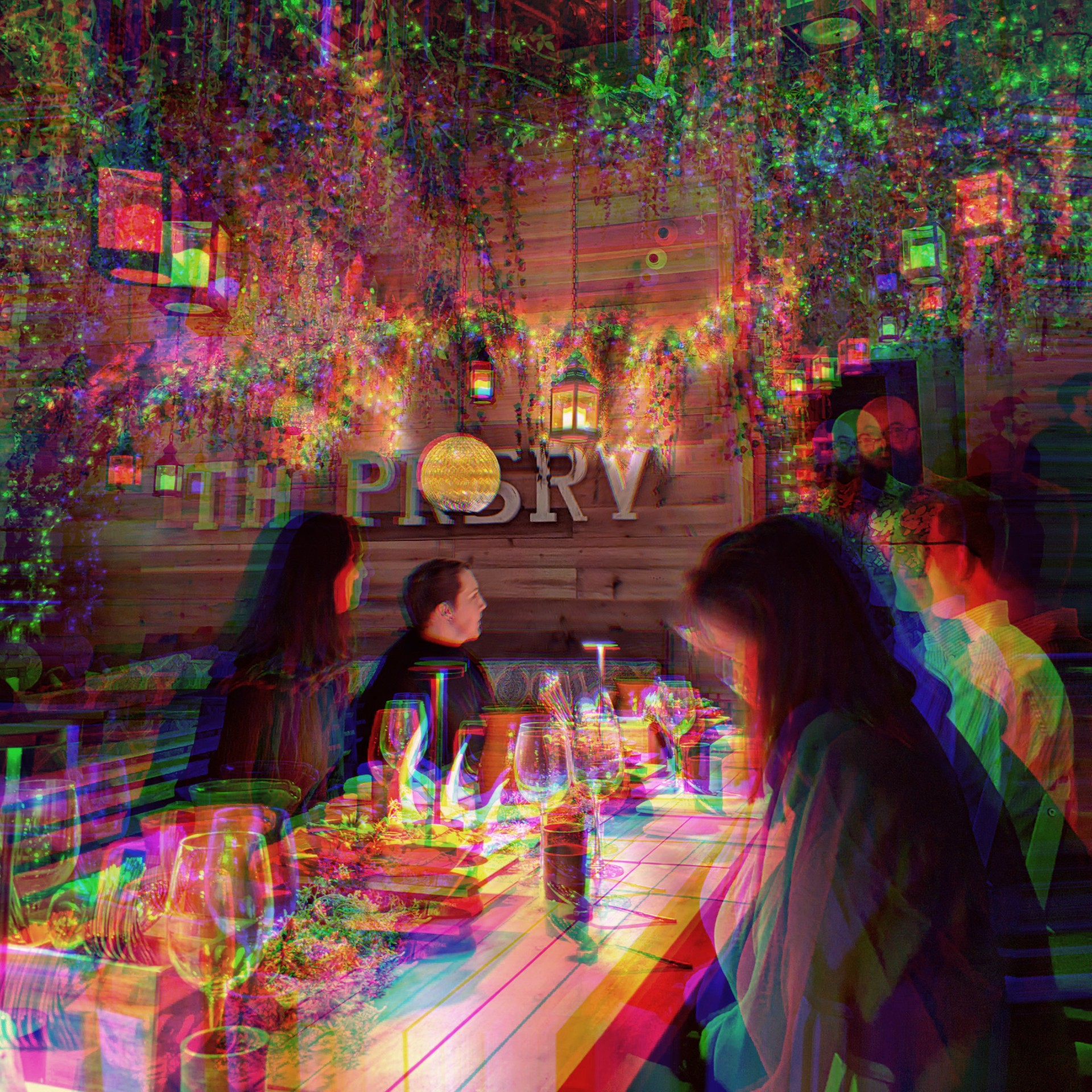There’s a town to be found just under an hour outside of Houston, nestled along the highway on the concave coastline of Galveston Bay. Named Kemah, meaning “wind in the face” among the indigenous Karankawa people who once lived here, the town has undergone significant several changes over the course of its 100+ years, going from fishing village to den of vice to family-friendly tourist hub in relatively short order.
Since the 1990s, the Kemah Boardwalk in particular has hogged much of the town’s attention, developed as it was into a monolithic corporate amusement park now run by Houston Rockets owner Tilman Fertitta. Here in this kingdom, travelers can treat themselves to Fertitta-owned restaurants like Bubba Gump Shrimp Co., the only casual dining chain inspired by a major motion picture.
Our group, however, didn’t come all this way to be gorge ourselves on dishes like the Run Across America Sampler and Forrest’s Seafood Feast. Rather, we were headed hardly a half a mile away from Kemah’s historic lighthouse-cum-watertower, next to the Skinfit Face & Body Spa, and across the street from the Holiday Inn Courtyard by Marriott.
Our destination was a particular little place called Th_Prsrv.
Though the building at 709 Harris Avenue might look like a double-decker Olive Garden®, it most certainly is not. If the venue’s giant parking lot wine bottle didn’t give it away, the trellised garden and greenhouse might: we may as well have been miles away from Crazy Alan’s Swamp Shack and Skallywag Suds N’ Grub. Featuring a winery, a distillery, and two high concept dining options all within its relatively small footprint, we were now within Chef David Skinner’s domain(e), as ambitious a project as one can imagine finding in such proximity to a Dippin’ Dots.
Skinner, the compound’s founder and proprietor, was born in Oklahoma to a Choctaw family, and since his teenage years, he’s been running restaurants. According to his website, his first was named after an Edith “Pilaf” song, a ten-seat affair in the back of his grandmother’s shop, followed by other forays into the restaurant business. Then, after a lengthy detour into the world commodity trading, Skinner would reemerge in the commercial kitchen, French-themed culinary entendres and all, by the year of 2014.
Since then, Skinner’s flagship restaurant, eculent, has been a major critical success to those in the know. Declared “tastier” than Chicago’s 3-starred Alinea, Skinner’s playful, eclectic tasting menu (of which he claims around 70% is sourced from his garden) has featured whimsical concoctions such as gooseneck barnacle pretzels, cauliflower puree molded into the shape of a brain, then topped with caviar, and something called “Shrubbery and a Lick”. And though our evening’s experience would involve none of the above, the latter image isn’t quite so far off.
Upon entering Th_Prsrv, eculent’s sister restaurant contained under the same roof, guests are treated to a sensory blast that brings to mind something of an adult Rainforest Cafe. With no lack of fake plants and twinkle lights snaking across the dark ceiling and hanging over a long, communal table, the mood certainly reads casual. It’s a refreshing counterpoint to the stark minimalism found in many of its contemporary fine diners (or at least those I’ve seen on TV).
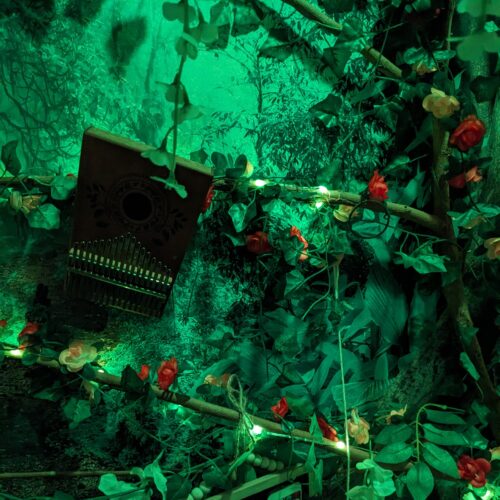
Counting thirty-six seats in total, with plenty of young staff eager to show us to ours, the tiny restaurant is clearly a product of some strange premonition. Opening in May 2023 as part of a collaboration with 2024’s James Beard Best Texas Chef Award Winner Jabthong “G” Benchawan Painter and her sommelier husband, Graham, Th_Prsrv aims to marry the Choctaw and Thai traditions of each respective chef, taking its guests on a trip across a vast culinary timeline that’s literally printed on the menu, from 2400 BCE to today.
Once everyone is settled in their seats, Graham enters with the charm and flash of a carnival barker. Bald, beared, and brash in an aloha shirt that out-kitsches the surrounding décor, the impassioned wine steward warms up the room with a brief rundown of what to expect of the evening, his predominantly indigenous pairings served alongside courses which alternate between each chef, together telling the tale of how these two cuisines evolved.
Skinner, rather imposing in stature, leads off the show by conjuring up memories of his grandmother’s root cellar, presenting lightly fermented fiddleheads, wild ramps, and a broad palette of other Thai and American vegetables preserved in their own sweat and served alongside sunflower butter topped, inevitably, with flowers.
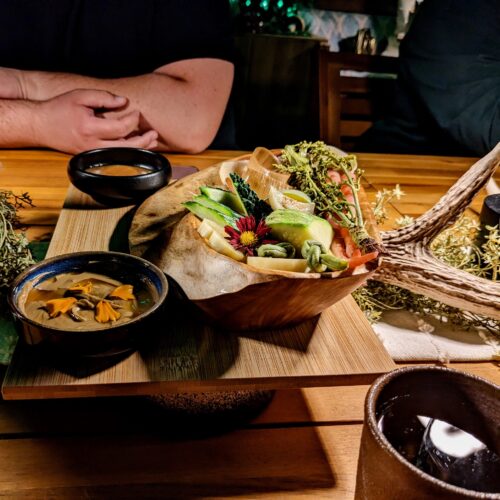
Next, Chef “G”, quick to smile and at times breathless from running back and forth from the kitchen, draws our attention to the note of galangal in her own subsequent dish. Flavoring a crisp canapé of catfish topped with prawn marinated in ginger and lime leaves, she notes that this rhizomatous root would’ve been one of the primary sources of piquancy before the Europeans tried in vain to colonize her native country.
Throughout the night, each course represents an exercise in restraint, following a strict narrative defined by past trade winds. Rather than following traditional, academic recipes in entirety, both chefs take their own liberties, Frankensteining each dish together from ingredients in accordance with what was available any given period, making for some rather interesting outcomes.
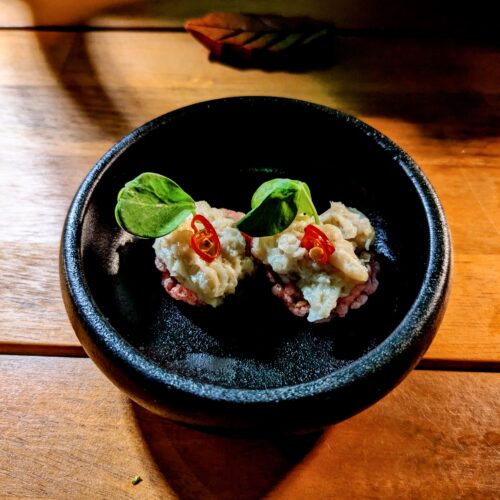
“Mother Earth”, on the Choctaw side, uses black ants to lend a hint of zest to its of bison tartare, representing the epoch before the Spanish introduced citrus to the Americas. Later, we’re told, a Choctaw corn soup featuring a bit of jowl represents the year 1540, when De Soto brought pigs to the New World. Only after the 17th century, when the Portuguese imported chilis to Thailand, are we treated to the familiar zip to which we’re all accustomed with such cuisine, manifest in the form of a spicy but otherwise tepid mushroom soup flavored with red ant eggs and the long, slender Chinda pepper.
The wines—largely Euro-centric, low-intervention varietals without, unfortunately, a single house-made sighting as suggested in the parking lot—weren’t always truly as wild as advertised, and could be at times overmatched by the atypical palate of sweets and sours. That said, and perhaps more importantly, the drinks were generously poured, further fortifying the room’s relaxed, convivial air. Given the size of the space and the nature of those who run it, at least one of the trio is constantly interacting with the guests, diving into each dish’s history to help make for an intellectually engaging atmosphere that left most of us happy.
Though most visitors to Kemah, by necessity alone, will be perfectly content with a plate of Lt. Dan’s Pork Ribs & Shrimp, those fortunate enough to travel in search of story-based, Insta-worthy cuisine might consider Th_Prsrv experience to be a relative bargain.
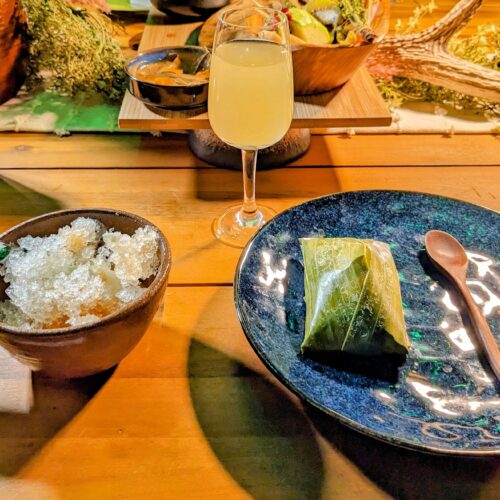
By the end of the evening, as we stumble back into the night outside, the neon of the boardwalk flashing somewhere in the distance, one can’t help but feel a bit disoriented. At least as pedantic as it is flavorful, Th_Prsrv’s menu plays with the very concept of authenticity, fully embracing the diasporic nature of all foods while completely detaching itself from its surroundings. As a result, this sort of dual narrative indigenous cuisine seems to sprout neither from Kemah, nor Houston, nor even Texas, but from the space between history and memoir. Ultimately, the epicurean spectacle of it all makes the meal memorable, a kind of dinner theater that’s well worth the drive, no matter how disorienting were its surrounds.
Th_Prsrv. 709 Harris Ave, Kemah, TX. 281.857.6492. $149, plus $129 for drink pairings.
